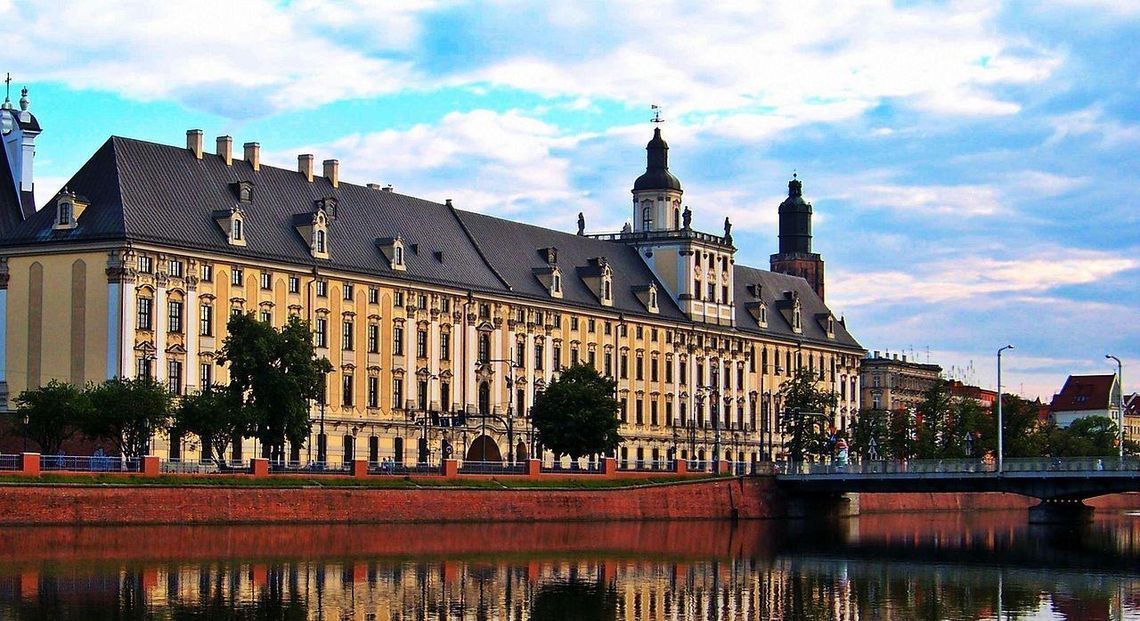
Apply to a foreign university with confidence
- Properly fulfilled documents
- Perfect motivation letter
- Support from a personal mentor
- Offers from several universities
Article score: 4.2 out of 5 (10 reviews)
Education in Europe does not necessarily mean expensive. There are quite budget options to get higher education in Europe. Read more in the article.
Free consultation
Higher education in Europe will not be as expensive as in the USA, Canada, or Australia. In many countries, a year of study costs around 1,500 USD, while in America this figure will be 20 times more — 30,000 USD. In Britain, prices are also much higher than in the EU countries — from 13,241 USD per year. At the same time, in terms of the quality of education, universities in Europe are not inferior to universities in English-speaking countries: among the top-100 best universities in the world according to QS, 16 are European. However, there are some specificities.


Master's degree programs in Europe last 1-2 years, depending on the country of study. As a rule, a Master's degree must correspond to a Bachelor's degree. This differentiates European education from American. One of the few exceptions to this rule is Russia. There are other things to keep in mind:
| # | University | City | Country | Undergraduate degree in the national language, year | Undergraduate degree in English, year | Master's degree in English, year | Dorm accommodation, month |
|---|---|---|---|---|---|---|---|
| 3 | Scuola Normale Superiore di Pisa | Pisa | Italy | free | n/a | free | free |
| 1 | University of Helsinki | Helsinki | Finland | free | 14,690-20,340 USD | 14,690-20,340 USD | n/a |
| 3 | Tampere University | Tampere | Finland | free | 11,300 USD | 6,780-13,560 USD | n/a |
| 2 | Aalto University | Helsinki | Finland | free | 13,560 USD | 16,950 USD | n/a |
| 4 | Norwegian University of Science and Technology | Trondheim | Norway | free | n/a | free | 452-678 USD |
| 1 | University of Oslo | Oslo | Norway | free | n/a | free | 405 USD |
| 3 | University of Bergen | Bergen | Norway | free | n/a | free | 339-565 USD |
| 36 | FH Vorarlberg University of Applied Sciences | Dornbirn | Austria | 46 USD | n/a | 46 USD | 278-437 USD |
| 11 | University of Florence | Florence | Italy | 176-2,994 USD | n/a | 176-2,994 USD | n/a |
| 18 | University of Strasbourg | Strasbourg | France | 208 USD | n/a | 289 USD | n/a |
| 6 | Free University of Brussels | Brussels | Belgium | 277-1,638 USD | 277-1,638 USD | 944 USD | 359-540 USD |
| 4 | University of Paris | Paris | France | 295 USD | 295 USD | 377 USD | 319-565 USD |
| 2 | TU Munich | Munich | Germany | 327 USD | 327 USD | 327 USD | n/a |
| 10 | Free University of Berlin | Berlin | Germany | 706 USD | 706 USD | 706 USD | n/a |
| 6 | Humboldt University of Berlin | Berlin | Germany | 713 USD | 713 USD | 713 USD | n/a |
| 9 | University of Granada | Granada | Spain | 857 USD | n/a | 928 USD | 226-1,921 USD |
| 6 | University of Valencia | Valencia | Spain | 939 USD | from 1,017 USD | 2,662 USD | 366-590 USD |
| 37 | University of Alicante | Alicante | Spain | 939-1,356 USD | n/a | 1,014-2,662 USD | 350-560 |
| 5 | University of Bern | Bern | Switzerland | 974 USD | 974 USD | 974 USD | n/a |
| 6 | University of Geneva | Geneva | Switzerland | 1,025 USD | 1,025 USD | 1,025 USD | 455 USD |
| 2 | Ghent University | Ghent | Belgium | 1,086 USD | 2,103 USD | 2,087-6,426 USD | 480-519 USD |
| 18 | UC Leuven -Limburg | Leuven, Dist, Hasselt, Diepenbeck, Genk | Belgium | 1,086 USD | 1,086 USD | 1,086-1,989 USD | 339-565 USD |
| 1 | ETH Zurich | Zurich | Switzerland | 1,497 USD | n/a | 1,497 USD | n/a |
| 1 | University of Vienna | Vienna | Austria | 1,686 USD | n/a | 1,686 USD | 333-621 USD |
| 9 | University of Graz | Graz | Austria | 1,686 USD | n/a | 1,686 USD | 320-537 USD |
| 11 | University of Siena | Siena | Italy | 2,034 USD | 2,034 USD | 1,559-3,336 USD | 339 USD |
| 46 | University of Orleans | Orleans | France | 3,130 USD | n/a | 275 USD | 195-730 USD |
There are many universities in Northern and Western Europe with affordable prices for education. In Germany, France, and Austria, prices in public universities are fixed by law, and in Norway and Finland, education in the national language is completely free. On the other hand, the high cost of living there "balances out" the low cost of education. The major expense in most countries is housing. Universities rarely have dormitories, so students have to rent apartments or rooms on their own.

| # | University | City | Country | Undergraduatedegree in the national language, year | Undergraduate degree in English, year | Master's degree in English, year | Dorm accommodation, month |
|---|---|---|---|---|---|---|---|
| 8 | Czech University of Life Science in Prague | Prague | Czech Republic | free | 217-3,527 USD | 217-4,705 USD | 102-169 USD |
| 17 | University of Gdansk | Gdansk | Poland | free | 1,240-3,075 USD | 1,736-1,921 USD | 136 USD |
| 4 | Warsaw University of Technology | Warsaw | Poland | free | 1,695-2,373 USD | 1,130-3,051 USD | 113 USD |
| 1 | Charles University | Prague | Czech Republic | free | 2,260-9,582 USD | 2,260-15,681 USD | 169 USD |
| 2 | Masaryk University | Brno | Czech Republic | free | 2,486 USD | 2,260-14,690 USD | 76-203 USD |
| 6 | University of Wrocław | Wroclaw | Poland | free | 3,390-4,124 USD | 3,955-4,124 USD | 179-258 USD |
| 3 | Tallinn University | Tallinn | Estonia | free | 3,729-5,198 USD | 2,063-4,520 USD | 192-232 USD |
| 1 | University of Tartu | Tartu | Estonia | free | 4,294-5,650 USD | 4,294-6,780 USD | 60 USD |
| 2 | National and Kapodistrian University of Athens | Athens | Greece | free | 6,780 USD | 0-6,780 USD | n/a |
| 3 | Aristotle University of Thessaloniki | Thessaloniki | Greece | free | n/a | 0-5,650 USD | free |
| 1 | University of Crete | Heraklion, Rethymnonon | Greece | free | n/a | 0-4,520 USD | free |
| 7 | Estonian Business School | Tallinn | Estonia | n/a | 2,599-2,859 USD | 2,797-3,814 USD | n/a |
| 1 | Eötvös Loránd University | Budapest | Hungary | 1,130-1,808 USD | 4,068-9,492 USD | 2,938-9,469 USD | 88-205 USD |
| 6 | University of Pecs | Pecs | Hungary | 1,130-5,085 USD | 4,068-8,588 USD | 4,972-12,430 USD | 125 USD |
| 3 | University of Szeged | Szeged | Hungary | 1,243 USD | 3,390-7,006 USD | 4,294-9,266 USD | 56 USD |
| 5 | Klaipeda University | Klaipeda | Lithuania | 1,492-2,932 USD | 1,492-3,220 USD | 3,164-4,633 USD | 62-136 USD |
| 2 | New Bulgarian University | Sofia | Bulgaria | 1,525 USD | 1,525 USD | 1,695 USD | 79-113 USD |
| 14 | Varna University of Economics | Varna | Bulgaria | 1,695 USD | 1,695 USD | 3,390 USD | 79-113 USD |
| 15 | Ventspils University of Applied Sciences | Ventspils | Latvia | 1,718-3,390 USD | 2,373-5,650 USD | 2270-3410 | 54-104 USD |
| 4 | Latvia University of Life and Sciences Technologies | Jelgava | Latvia | 1,763-3,390 USD | 2,260-4,520 USD | 2,486-4,520 USD | 94-153 USD |
| 4 | Vytautas Magnus University | Kaunas | Lithuania | 1,886-7,879 USD | 2,970-8,597 USD | 4,508-5,409 USD | 169-203 USD |
| 10 | Varna Free University | Varna | Bulgaria | 2,170 USD | 2,170 USD | 3,390 USD | 79-113 USD |
| 1 | University of Latvia | Riga | Latvia | 2,486-4,520 USD | 2,486-5,424 USD | 2,672-6,780 USD | 113-305 USD |
| 2 | Vilnius Gediminas Technical University | Vilnius | Lithuania | 2,970-20,300 USD | 1,886-3,335 USD | 3,336-4,784 USD | 124-169 USD |
The universities in Eastern and Southern Europe are considered less prestigious than in Western and Northern. But education there is also good. St. Petersburg State University, for example, is considered one of the 50 best universities globally to study for a Master in Management[2]. In addition, these universities have many English-language Bachelor's programs — many more than in Western Europe. And education in the national language in many countries is completely free. Living expenses are about as low as it gets: universities have dormitories that cost 113-169 USD per month, so you won't have to spend a lot of money on accommodation.
60+ countries
we work with
$1,000,000 saved
by students through scholarships
6,400 offers
our students got